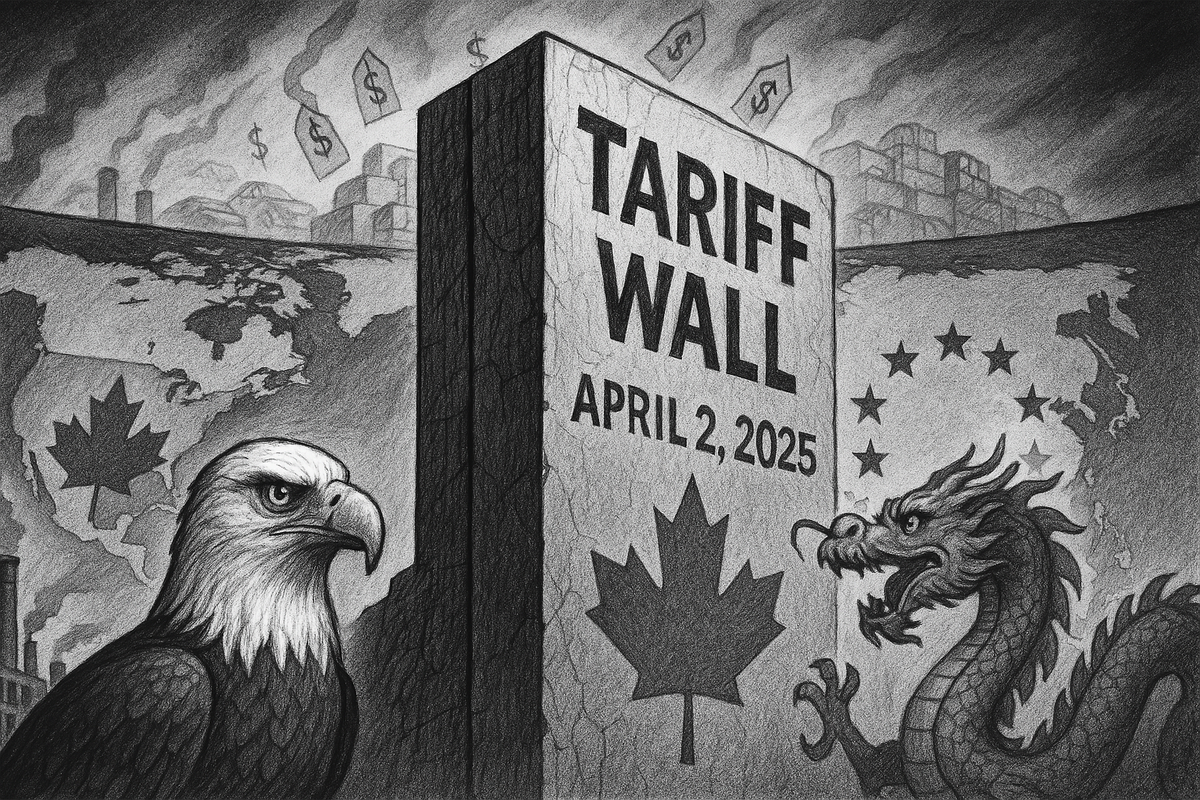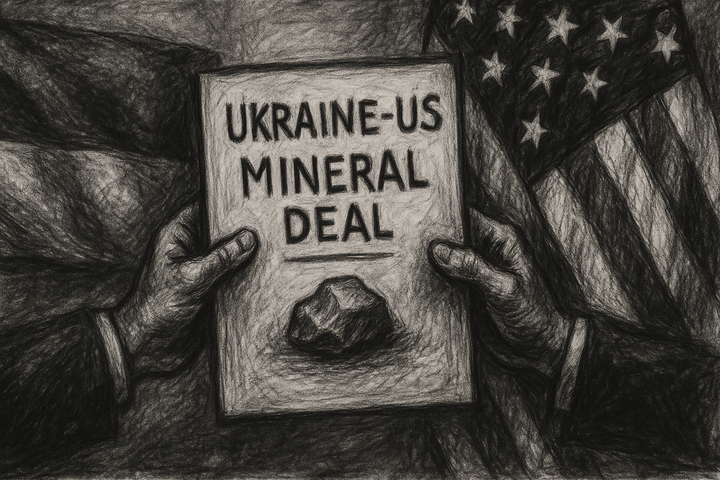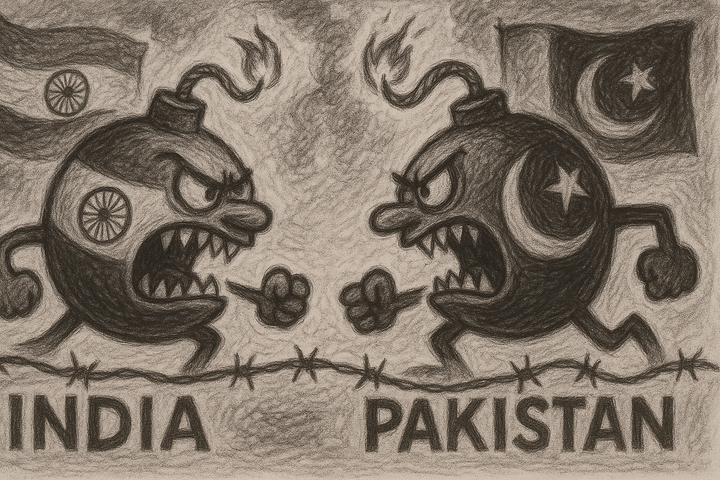Trump’s “Liberation Day”: Reciprocal Tariffs, Market Jitters, and the New Economic Gamble

April 2, 2025 — President Donald Trump is staging what may be one of the boldest trade policy pivots in modern U.S. history. Dubbed “Liberation Day,” this political theater is more than just branding: it’s a full-scale declaration of economic war on global trade asymmetries. Trump plans to roll out sweeping reciprocal tariffs targeting countries from the EU to India, with 25% tariffs on auto imports kicking off the agenda.
The announcement, set for 3 p.m. EDT in the White House Rose Garden, is already reshaping markets and igniting fresh debates about economic sovereignty, inflation, and global stability. Here's everything you need to know.
📊 Afternoon Update, Tariff Chart: What They Charge Us vs. What We’re Charging Back
Donald Trump Truth Social 4/02/25 05:04 PM pic.twitter.com/s1vlhFxUyl
— Donald J. Trump Posts From His Truth Social (@TrumpDailyPosts) April 2, 2025
Donald Trump Truth Social 4/02/25 05:04 PM pic.twitter.com/4Gs2DSEM0k
— Donald J. Trump Posts From His Truth Social (@TrumpDailyPosts) April 2, 2025
One big point amid all the headlines: I was texting with press secretary Karoline Leavitt during the event and she confirms that the 34 percent tariff on China is ON TOP of the previous 20 percent. So that means the rate on China will be *54* percent when these tariffs take…
— Eamon Javers (@EamonJavers) April 2, 2025
🔍 What Is “Liberation Day,” Really?
Trump has defined April 2 as the day the U.S. will “liberate” itself from foreign dependency—particularly in manufacturing—by matching the tariffs other countries impose on American goods. This idea of “reciprocal tariffs” sounds fair on paper, but in practice, it could trigger global trade retaliation, increase prices at home, and disrupt integrated supply chains.
Key highlights of the plan:
- 25% tariff on all imported cars starting April 3, expanding to auto parts by May.
- 25% tariff on goods from countries that import oil/gas from Venezuela (a move that will ripple through energy alliances).
- Focused targeting of nations like the EU, South Korea, Brazil, India, and any countries entangled in Venezuela's energy trade.
- No exemptions yet announced—even for NAFTA/USMCA partners like Canada and Mexico, where existing tariff deferrals are set to expire.
🌍 Who’s in the Crosshairs?
Trump’s team is reportedly using an internal list referred to as the "Dirty 15"—a group of countries with high U.S. trade deficits. While the full list isn’t public, early reports confirm the EU, Brazil, India, and South Korea are all being targeted.
The automotive sector is the immediate battlefield. But with global production chains so tightly wound—think German parts in Mexican-assembled U.S. cars—these tariffs won’t just hit foreign manufacturers. American car prices are expected to jump, and some U.S.-based plants could take collateral damage.
📉 Markets Are Already Reacting
Although the official rollout is set for April 2, markets have been pricing in the risk for days.
- On March 25, the Dow dropped 700 points amid early leaks about the tariff agenda.
- On April 1, global markets were in risk-off mode:
- Nikkei down 4%,
- Kospi down 3%,
- Gold surged past $3,100/oz as investors fled to safety.
According to Dario Perkins of TS Lombard, the move signals a retreat from hyper-globalization, shaking confidence in fragile supply chains already battered by years of pandemic disruptions and geopolitical fragmentation.
🧮 Economic Risks vs. Political Rhetoric
Trump and his allies argue this is about bringing jobs home and restoring U.S. industrial dominance. The playbook is familiar: slap on tariffs, force companies to relocate factories, and campaign on the narrative of American economic revival.
But the math is less rosy:
| Impact Area | Expected Outcome |
|---|---|
| Consumer Prices | 🚗 Car prices could rise by $3,000+ per vehicle |
| Jobs | Mixed: domestic factories could grow, but rising costs may trigger cuts |
| GDP Growth | Projected downward pressure, per Fed forecasts |
| Inflation | Likely spike, especially in durable goods |
| Market Volatility | Already underway, with further instability expected |
| Political Fallout | GOP strategists fear backlash in swing states facing cost-of-living hikes |
The Federal Reserve and European Central Bank both signaled that trade uncertainty could amplify inflation and slow economic recovery. Meanwhile, Trump appears unfazed. In an NBC News interview, he waved off concerns about price hikes, saying Americans “will understand sacrifice if it means freedom.”
⏳ April 1: The Calm Before the Storm
As of 10:16 p.m. EDT on April 1, no official pre-announcements were made. But the tension is palpable. On social media, major outlets like @orlandosentinel and @AJEnglish are fanning speculation, and analysts are prepping clients for potential shocks across equities, commodities, and currency markets.
The smart money is moving:
- Safe havens like gold are surging.
- Volatility indexes (VIX) are climbing.
- Multinational manufacturers are bracing for cost modeling chaos.
💬 Final Thoughts: Strategic Recalibration or Economic Roulette?
Trump’s “Liberation Day” could redefine U.S. trade policy for years to come. It’s bold. It’s brash. But is it brilliant—or reckless?
The bet is that pain now will yield sovereignty later. But history shows that trade wars have a nasty habit of backfiring—especially when inflation is already a hot-button political issue. The biggest question isn’t whether these tariffs will spark short-term volatility. It’s whether the structural costs outweigh the ideological gains.
🤔 What do you think?
- Will these reciprocal tariffs force countries to come to the negotiating table?
- Can the U.S. absorb the inflation shock without triggering a recession?
- Is “Liberation Day” the start of a new economic doctrine—or a political stunt for 2026?
Sound off in the comments. And keep an eye on the Rose Garden at 3 p.m. EDT—history might be in the making.
| Country | Tariffs Charged to the U.S.A. (%) | U.S.A. Discounted Reciprocal Tariffs (%) |
| Cambodia | 97% | 49% |
| Laos | 95% | 48% |
| Madagascar | 93% | 47% |
| Vietnam | 90% | 46% |
| Sri Lanka | 88% | 44% |
| Myanmar (Burma) | 88% | 44% |
| Bangladesh | 74% | 37% |
| Serbia | 74% | 37% |
| Botswana | 74% | 37% |
| Thailand | 72% | 36% |
| China | 67% | 34% |
| Taiwan | 64% | 32% |
| Indonesia | 64% | 32% |
| Switzerland | 61% | 31% |
| South Africa | 60% | 30% |
| Pakistan | 58% | 29% |
| Tunisia | 55% | 28% |
| Kazakhstan | 54% | 27% |
| India | 52% | 26% |
| South Korea | 50% | 25% |
| Japan | 46% | 24% |
| Malaysia | 47% | 24% |
| Cote d'Ivoire | 41% | 21% |
| European Union | 39% | 20% |
| Jordan | 40% | 20% |
| Nicaragua | 36% | 18% |
| Israel | 33% | 17% |
| Philippines | 34% | 17% |
| Norway | 30% | 15% |
| United Kingdom | 10% | 10% |
| Brazil | 10% | 10% |
| Singapore | 10% | 10% |
| Chile | 10% | 10% |
| Australia | 10% | 10% |
| Turkey | 10% | 10% |
| Colombia | 10% | 10% |
| Peru | 10% | 10% |
| Costa Rica | 17% | 10% |
| Dominican Republic | 10% | 10% |
| United Arab Emirates | 10% | 10% |
| New Zealand | 20% | 10% |
| Argentina | 10% | 10% |
| Ecuador | 12% | 10% |
| Guatemala | 10% | 10% |
| Honduras | 10% | 10% |
| Egypt | 10% | 10% |
| Saudi Arabia | 10% | 10% |
| El Salvador | 10% | 10% |
| Trinidad and Tobago | 12% | 10% |
| Morocco | 10% | 10% |




Comments ()